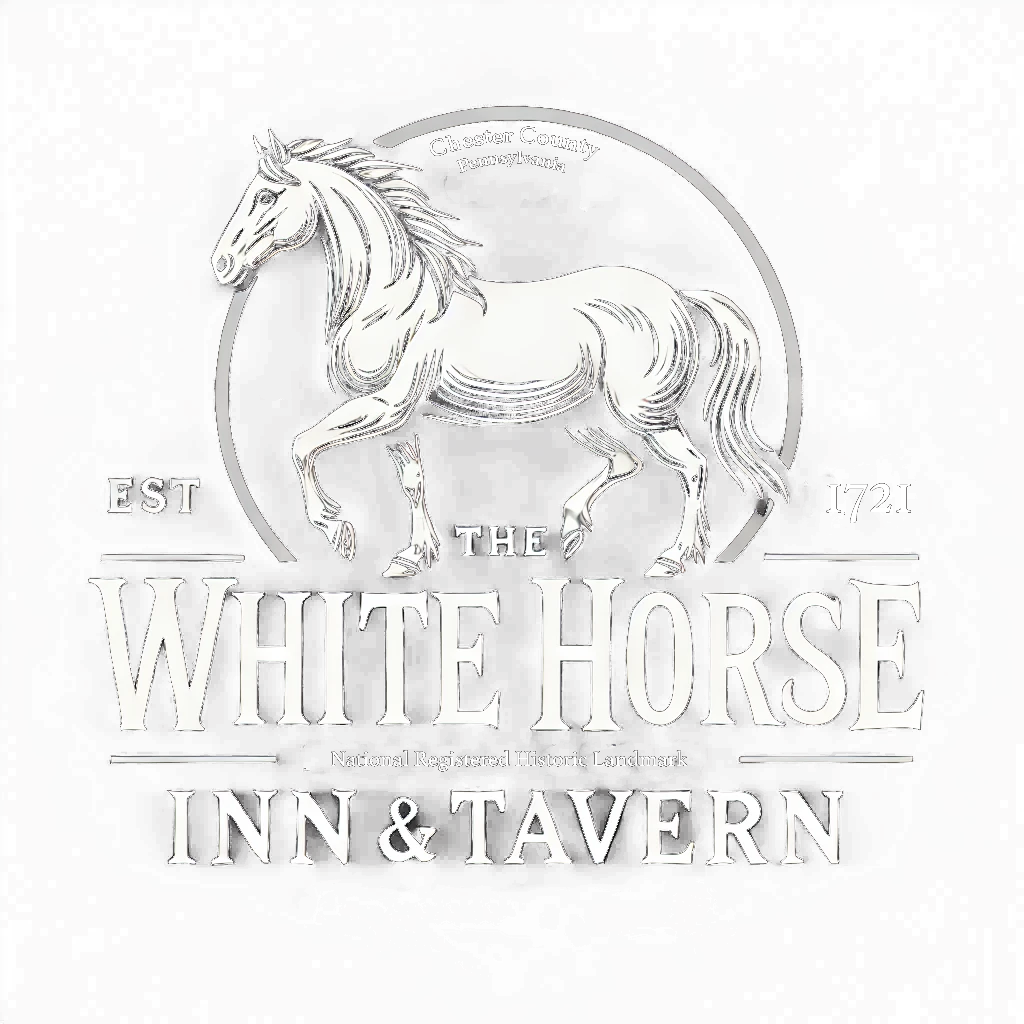Tredyffrin Easttown Historical Society History Quarterly, October 1970 Volume 15 Number 4, Page 77
At Plane Brook, on the southside, is the Swananbers home. This was formerly the White Horse Tavern, with blacksmith shops across the road, and graves of Revolutionary soldiers behind the shops. “Sign of the White Horse” was one of the first licenses in Chester County. That was in 1721 that James Thomas applied for a license. Mr. Wilson states an Edward Kennison was in business before James Thomas, and took over from Thomas in 1722. Apparently Kennison had trouble getting a license, and Thomas took it out in his name. This was a busy intersection. What was then Moore Hall Road left from here to the Schuylkill. (Could the present Moores Road be a part of this old road?). Also Lancaster Road & Bacton Road to Conestoga all came together at this focal point. The first building was a primitive log cabin, standing to the west end of the present dwelling. After the Revolution, the present house was added. There was water piped (Wooden pipes) into the cellar from a hillside spring. John Neely was an owner to at least 1753 [possibly 1762], then John Kerlin in the 70’s. When Hessians came in from the direction of Ship Road to the west, much was destroyed and Kerlin claimed 199 lbs. against General Howe, which claim was affirmed before Benjamin Bartholomew. The Inn was the first relay stop between Headquarters and Lancaster, where the Congress was in session. Capt. Patrick Anderson’s son Isaac was a messenger. Indians stopped there 1790-1800 en route to Philadelphia to trade. Arthur Rice was an owner in 1737, and a trusted scout for Washington. He died in 1796. He was a Mason, and Lodge meetings were held in a room on the second floor, east end. In 1810 John Pearce, supposedly a brother of Cromwell Pearce (this conflicts with “History of Malvern”) become an owner. However, the Pike had been laid out, and traffic was diverted. In 1817 Samuel Reitenbaugh and then his son A. Reitenbaugh became owners. The latter building, the fine stone barn in 1839, replaced the original log barn. Washington was at the White Horse September 16, 1777, leaving at 4 P.M. and retiring to Yellow Springs (now Chester Springs). Gen. Wayne was at the White Horse after the “Paoli Massacre”. Myrtle L. Berger Swanenberger, poetess, lived here in the early 1920’s, writing in 1923 the “Cow Jumped Over the Moon”.
